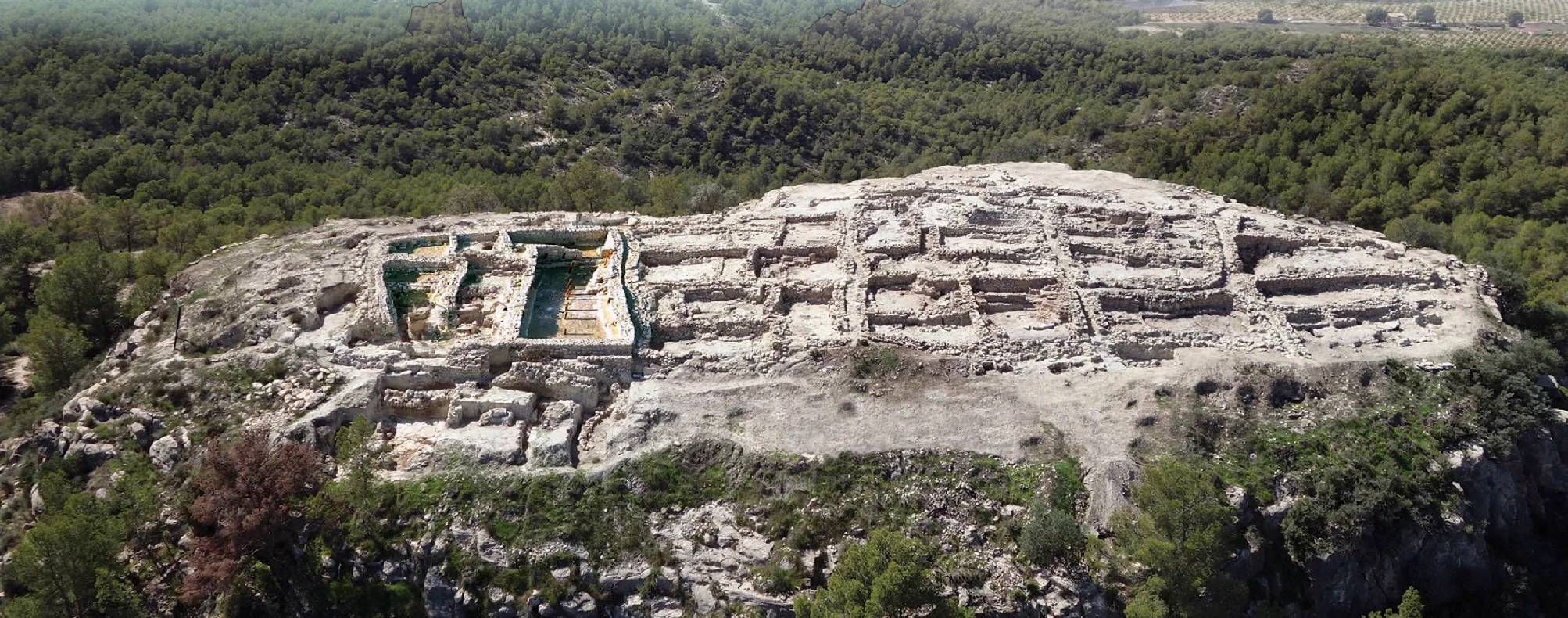La Almoloya on:
[Wikipedia]
[Google]
[Amazon]

 La Almoloya is an archaeological site in the southeast corner of the
La Almoloya is an archaeological site in the southeast corner of the
You Should See Her in a Crown. Now You Can See Her Face
', Science Times, New York Times, November 23 2021 The couple is buried beneath the floor of a large building. Radiocarbon dating suggests the burial took place at approximately 1700 BC. Remains of a female infant who was a first-degree descendant of the couple was found in a separate grave at the site. The silver treasure associated with the woman in grave 38 has been valued at tens of thousands of dollars. The graves of other high-ranking Argaric women discovered at the site also contained silver treasure, suggesting they may have had powerful political status in the society. According to Lull et al., the building above the grave may be one of the earliest Bronze Age palaces identified in Western Europe.Lull et al.
"Emblems and spaces of power during the Argaric Bronze Age at La Almoloya, Murcia,"
''Antiquity'',
3D reconstruction of La AlmoloyaThe silver diadem from La Almoloya, 'The Bronze Age treasure that could rewrite history' (BBC 2022)
{{Archaeology-stub Archaeological sites in Spain

 La Almoloya is an archaeological site in the southeast corner of the
La Almoloya is an archaeological site in the southeast corner of the Iberian Peninsula
The Iberian Peninsula (),
**
* Aragonese and Occitan: ''Peninsula Iberica''
**
**
* french: Péninsule Ibérique
* mwl, Península Eibérica
* eu, Iberiar penintsula also known as Iberia, is a peninsula in southwestern Europe, defi ...
in modern-day Spain. It is a principal site of study for the Bronze Age
The Bronze Age is a historic period, lasting approximately from 3300 BC to 1200 BC, characterized by the use of bronze, the presence of writing in some areas, and other early features of urban civilization. The Bronze Age is the second pri ...
El Argar
El Argar is an Early Bronze Age culture that was based in Antas, Almería, within modern Spain. It is believed to have been active from about 2200 B.C. to 1500 B.C.Lull et al."Emblems and spaces of power during the Argaric Bronze Age at La Almol ...
culture that flourished from about 2200 BC to 1500 BC and controlled territory in Iberia that is equivalent in size to modern Belgium
Belgium, ; french: Belgique ; german: Belgien officially the Kingdom of Belgium, is a country in Northwestern Europe. The country is bordered by the Netherlands to the north, Germany to the east, Luxembourg to the southeast, France to th ...
.
The site includes the find of what is described as an "especially rich" grave 38, which was excavated beginning in 2014. It contains the skeletal remains of a woman and a man. The vast majority of the grave goods are associated with the woman; it contains numerous silver
Silver is a chemical element with the Symbol (chemistry), symbol Ag (from the Latin ', derived from the Proto-Indo-European wikt:Reconstruction:Proto-Indo-European/h₂erǵ-, ''h₂erǵ'': "shiny" or "white") and atomic number 47. A soft, whi ...
grave goods
Grave goods, in archaeology and anthropology, are the items buried along with the body.
They are usually personal possessions, supplies to smooth the deceased's journey into the afterlife or offerings to the gods. Grave goods may be classed as a ...
, including a diadem
A diadem is a type of crown, specifically an ornamental headband worn by monarchs and others as a badge of royalty.
Overview
The word derives from the Greek διάδημα ''diádēma'', "band" or "fillet", from διαδέω ''diadéō'', "I ...
.Pinkowski, Jennifer, You Should See Her in a Crown. Now You Can See Her Face
', Science Times, New York Times, November 23 2021 The couple is buried beneath the floor of a large building. Radiocarbon dating suggests the burial took place at approximately 1700 BC. Remains of a female infant who was a first-degree descendant of the couple was found in a separate grave at the site. The silver treasure associated with the woman in grave 38 has been valued at tens of thousands of dollars. The graves of other high-ranking Argaric women discovered at the site also contained silver treasure, suggesting they may have had powerful political status in the society. According to Lull et al., the building above the grave may be one of the earliest Bronze Age palaces identified in Western Europe.Lull et al.
"Emblems and spaces of power during the Argaric Bronze Age at La Almoloya, Murcia,"
''Antiquity'',
Cambridge University Press
Cambridge University Press is the university press of the University of Cambridge. Granted letters patent by Henry VIII of England, King Henry VIII in 1534, it is the oldest university press
A university press is an academic publishing hou ...
, 11 March 2021 It has been described as a large hall, with benches built into the sides, a podium in front of a hearth for heat and lighting, and seating for 50 people. Unique among the hundreds of buildings excavated in the study of El Argar culture, the hall appears to have been a place for the conduct of politics.
References
External links
3D reconstruction of La Almoloya
{{Archaeology-stub Archaeological sites in Spain